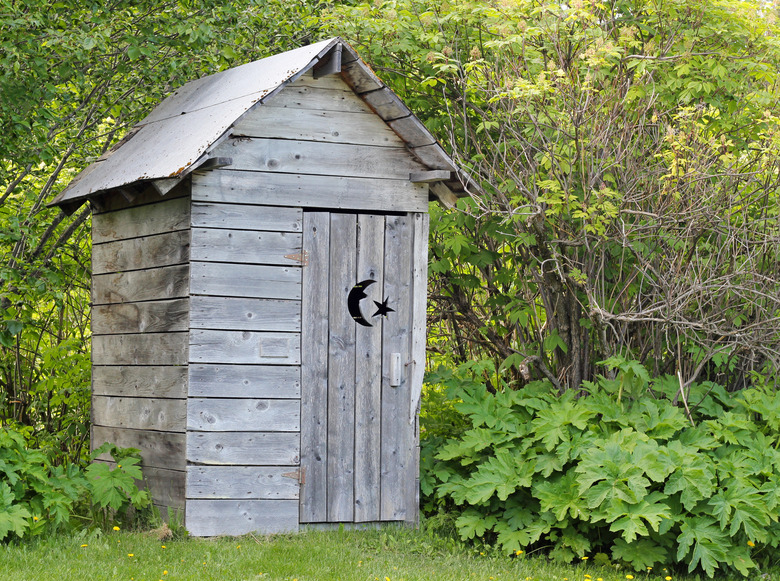Pit Toilet Vs Vault Toilet
Americans love their indoor plumbing, but if you don't have access to sanitation systems, you'll need an outhouse and this means deciding between a vaulted or pit toilet. These two options both involve a hole in the ground where your waste will be "deposited" after you use the outhouse, but a vaulted toilet has a water-impermeable container in the hole, whereas a pit toilet does not. For this reason, vaulted toilets can be pumped empty, but pit toilets may eventually need to be relocated after they fill. There are advantages and disadvantages to both systems, but your location will typically be the most important factor when choosing between the two.
Pros and Cons of a Pit Toilet
Pros and Cons of a Pit Toilet
If you want to make a simple outhouse, start by finding a suitable place and digging a large hole in the ground. Cover this with a wooden bench with an opening, construct a small shelter around it, and you're done. Waste that goes into the pit stays where it is until it decomposes and becomes part of the earth. It's a pretty straightforward approach, but there are a few problems:
- It smells, but if you assiduously add sawdust after every use, it doesn't smell as bad, and if you install a vent pipe that goes through the roof of the shelter, the odors can almost disappear.
- If you overuse it and it fills, you have to remove the structure, fill in the hole with dirt and start over again somewhere else.
- Liquid waste can leach into the groundwater if you dig the pit too close to the water table.
Despite these drawbacks, one of the biggest advantages of a pit toilet is that it's virtually maintenance-free — that is until it's full.
Pros and Cons of a Vault Toilet
Pros and Cons of a Vault Toilet
You can convert a pit toilet to a vaulted toilet simply by digging a pit large enough to accommodate a container to hold the waste. Such containers have been constructed of concrete in the past, but today, most are made of cross-linked polyethylene, a material that won't crack, leak, or decompose. A vaulted toilet has the same odor problems as a pit toilet, and this is often addressed with chemicals as well as with venting, but if a vault fills up, you can pump the waste into a truck and haul it away, so you never need to relocate the toilet.
Vaulted toilets are a great permanent waste solution for remote areas, which is why the U.S. Forest Service uses them extensively, but there's one small problem. You need roads to be able to haul away the waste. Vault toilets won't work in remote areas that you can only access on foot; for these places, a pit toilet is the only possibility.
Is Composting or Sanitizing Better?
Is Composting or Sanitizing Better?
Another big difference between pit toilets and vaulted toilets is the way waste gets handled. In a pit toilet, it remains in the pit forever and decomposes, eventually turning to compost. The waste in a vaulted toilet can't seep into the ground, and without access to beneficial bacteria from the soil, it turns into an anaerobic slurry in the vault and can become dangerously unsanitary. When the vault is emptied, it's usually sanitized at the same time with deodorizing chemicals that, in their way, smell as bad as the waste. If you want to build an ecological toilet, build a pit toilet.
